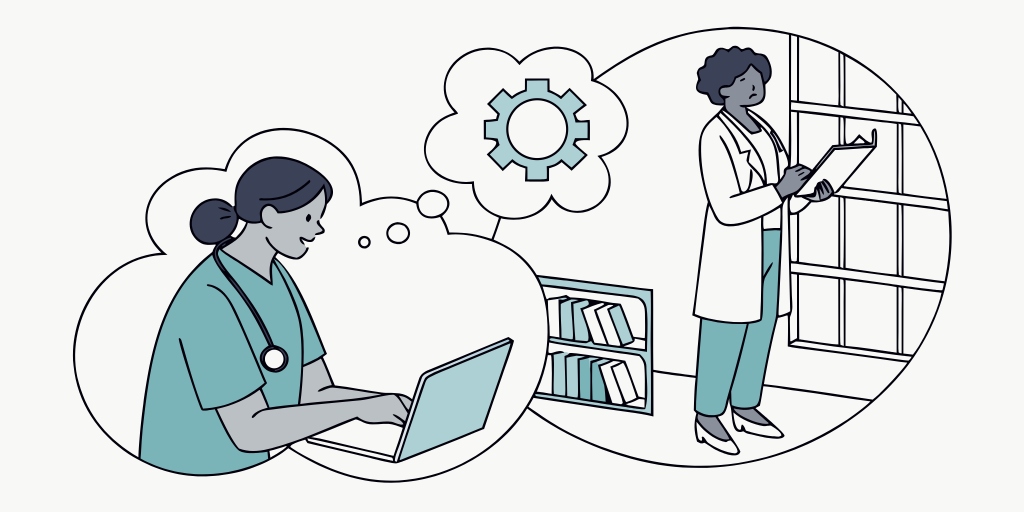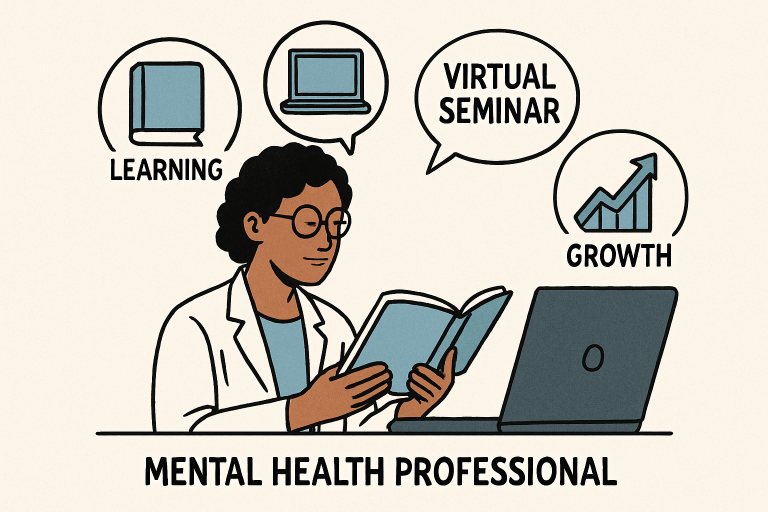
The Role of CPD in Mental Health Practice: Staying Current and Competent
Key Takeaways
- Continuing Professional Development (CPD) equips mental health practitioners with up-to-date knowledge and practical skills to ensure the delivery of effective, evidence-based care.
- Structured CPD blends self-assessment, reflective learning, and research-driven approaches to embed best practices in daily work.
- Overcoming resource challenges and time barriers is possible through innovative, flexible CPD strategies and a culture of ongoing professional growth.
- Developments in technology, notably AI, are making high-quality CPD more accessible and engaging for practitioners worldwide.
The rapidly shifting landscape of mental health care requires practitioners to remain vigilant in updating their expertise and approaches. As new research and treatment models emerge, the importance of Continuing Professional Development (CPD) becomes increasingly evident. CPD is not just about meeting regulatory requirements; rather, it is about fostering a culture of continuous learning and self-improvement within the profession. At institutions like The Greenane Centre, commitment to CPD underpins the delivery of progressive, client-centered care. Participating in structured continuing professional development (CPD) activities helps practitioners adapt to changing patient needs, uphold best practices, and build resilience in their careers. CPD is essential for maintaining trust, competence, and compassion within the mental health workforce. As mental health gains public attention, the demand for knowledgeable practitioners is increasing. A variety of CPD strategies and modern tools foster personalized growth, allowing clinicians to enhance patient outcomes while also supporting their well-being in a challenging field.

Defining CPD in Mental Health
CPD within mental health practice refers to the ongoing process whereby practitioners enhance both their theoretical knowledge and practical skills. This ongoing learning extends from formal postgraduate training to informal self-study, reflective practice, and peer consultation. According to the American Psychological Association, the effectiveness of any mental health service increases when staff are engaged in lifelong learning and reflective practice. The core objective of CPD is to maintain competence while fostering innovation and adaptability. For instance, clinics that institute regular workshops and promote journal clubs enable therapists and counselors to challenge assumptions and deploy evidence-based interventions suited to their communities.
Benefits of CPD for Practitioners and Patients
Both practitioners and patients benefit significantly from thorough, thoughtfully designed CPD. For mental health professionals, CPD provides job security, personal growth, and an avenue to avoid professional stagnation. Engaging in regular training builds confidence, rejuvenates practice routines, and satisfies requirements for licensure and registration. For patients, the primary benefit is access to care that reflects cutting-edge research, safe protocols, and a holistic, up-to-date clinical approach. Studies published in leading journals confirm that clinics prioritizing CPD report higher patient satisfaction and recovery outcomes.
Effective Strategies for CPD
- Self-Assessment: Practitioners are encouraged to perform regular self-assessments to identify knowledge gaps and set purposeful learning objectives.
- Case-Based Learning: Interactive sessions where real patient cases are reviewed and discussed help bridge the gap between theory and real-world practice.
- Reflective Practice: Maintaining reflective journals and engaging in peer feedback promotes a deeper understanding and personal accountability in professional development.
Strategically blending these approaches nurtures a lifelong learning mindset. According to the Royal College of Psychiatrists, engaging with personalized and reflective learning opportunities ensures that CPD translates directly into better patient care and practitioner satisfaction.
Overcoming Barriers to CPD
Despite its well-recognized value, CPD faces practical challenges, including time scarcity, funding constraints, and uneven institutional support. Practitioners dealing with heavy caseloads or limited access to resources may find it challenging to participate in regular training. Solutions can include creating more flexible CPD formats—such as on-demand digital courses, webinars, and micro-learning modules that allow practitioners to fit training into their schedules. Furthermore, organizations can cultivate a culture that supports investment in professional growth, offering financial incentives, protected time for learning, and recognizing achievement in CPD.
Technological Advancements in CPD
Technology is revolutionizing the way CPD is delivered in the mental health sector. Artificial intelligence and digital learning platforms enable new forms of interactive training, personalized feedback, and the immediate application of learning. AI-driven case simulations and smart assessment tools can gauge proficiency levels and suggest tailored learning paths. Notably, AI-assisted platforms are now being used to help providers deliver therapy protocols with improved empathy and accuracy, optimizing both the clinician’s workflow and the patient’s outcome. This technological leap not only democratizes access to high-quality CPD but also ensures that practitioners anywhere in the world can learn at their own pace and according to their specific needs.
Case Study: Implementing CPD in Practice
In a progressive mental health clinic aiming to enhance outcomes and professional satisfaction, a structured CPD program was introduced. Staff members participated in a combination of expert-led workshops, regular peer discussions, and hands-on application of new therapeutic techniques. Over the course of a year, the clinic observed notable improvements: patients reported greater satisfaction and faster recovery times, while practitioners felt more empowered and competent in their roles. This case underscores how embedding CPD into the organizational culture leads to measurable advances in both patient care and staff development.
Conclusion
Continuing Professional Development is the cornerstone of excellence in mental health practice. As practitioners embrace purposeful CPD strategies and innovative technologies, they not only ensure compliance with regulatory standards but also drive significant improvements in patient outcomes and personal fulfillment. By fostering a learning-focused culture and embracing flexibility in CPD delivery, mental health organizations and professionals can remain at the forefront of this dynamic and critically important field.



Average Rating